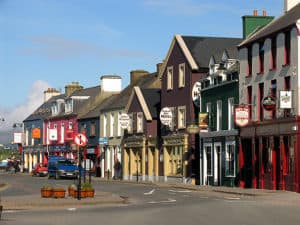The Cultural Impact of the Spice Trade: How Exotic Flavours Shaped Global Cuisine!

Updated On: April 23, 2024 by Esraa Mahmoud
The cultural impact of the spice trade extends far beyond the kitchen. What began as a luxury phenomenon, with spices treasured for their flavour, preservative qualities, and medicinal properties, evolved into a force that reshaped the world. Pursuing spices like pepper, cinnamon, and cloves fuelled a global network of trade that connected distant lands, resulting in profound societal shifts.
The spice trade was not merely about commerce but a catalyst for exploration, conquest, and cultural exchange. As European nations vied for control of the spice-rich regions of Asia, they developed maritime routes that turned spices from exclusive commodities into staples across Europe and influenced every aspect of life, from dining habits to economic policies.
In our history, the draw of spices often set the stage for broader cultural interactions. For instance, exchanging knowledge, philosophies, and traditions usually followed the trade routes established for spices. As sailors and merchants traversed continents, these routes became conduits of cultural exchange, enriching societies on both sides of the trade.
The wealth generated by the spice trade attracted not only legitimate enterprise but also piracy and conflict, illustrating how coveted these treasures were. From influencing the global economy to adding flavour to local cuisines and driving the exploration that shaped our modern world, the legacy of the spice trade is multifaceted. As spices moved from luxury goods to staple items in pantries across the globe, their journey left indelible marks on the cultures they touched.
Origins and Early History
As we explore the dawn of the spice trade, we uncover a tapestry woven with the threads of early civilisations, bustling trade routes, and the insatiable human desire for aromatic flavours.
Prehistoric Uses of Spices
Archaeological evidence suggests that prehistoric people were aware of spices and utilised them. Excavations reveal that spices were traded alongside precious stones and other high-value commodities as far back as the 10th millennium BC. These early exchanges laid the groundwork for a trade that would eventually span the globe.
The Silk Road and Eastern Spice Trade
The Silk Road was instrumental in the Eastern spice trade, providing a network connecting the Middle East with Asia. By the time of the Roman Empire, the Silk Road had become a bustling commercial highway, crucial for transporting cinnamon, cassia, cardamom, and ginger from the East to eager European markets.
Antiquity and the Middle East
In Antiquity, the Middle East played a pivotal role in spice trade dynamics, becoming a cultural and commercial hub. The grandeur of the Roman Empire represented a high demand for exotic spices, which were used for a myriad of purposes, from culinary to ceremonial, indicating wealth and the interconnectedness of ancient societies.
Major Spice Routes

The spice routes, integral to cultural exchanges and commerce throughout history, were primarily divided into overland and maritime pathways, including the famed Incense Route. These trade networks were the channels through which spices flowed from regions such as the Spice Islands and Asia to markets in the Mediterranean and beyond.
Overland Routes
The Silk Road is one of the most notable overland trade routes, extending from China through the rough terrains of Central Asia to the Mediterranean, facilitating the exchange of goods like silk and spices and the mingling of cultures and ideas. Contrary to its name, the Silk Road was a web of routes that enabled the distribution of myriad luxurious spices, such as cinnamon and black pepper, to reach the markets of Europe.
Maritime Routes
Maritime exploration led to establishment of sea routes that were instrumental in expanding the spice trade. The Indian Ocean served as a critical waterway, where Arab and later Portuguese traders brought spices from the East through a network stretching from the Spice Islands to Europe. These routes connected with the Mediterranean, becoming essential conduits for the spice exchange, which the great European powers of the time eagerly tapped into.
Incense Route
The Incense Route was a series of ancient trade networks that facilitated the transport of frankincense and myrrh from places like Southern Arabia through the harsh deserts to the Red Sea Route. This is linked with the Mediterranean world, where these aromatic resins became valued for their use in rituals and perceived medicinal properties.
Through these main arteries of trade, spices transitioned from luxury items to staples in global cuisine, shaping the palates and cultural practices of societies worldwide. Our understanding and appreciation for these routes reveal the profound impact the search for exotic flavours had on the formation of our past civilisations.
European Quest for Spices
Our exploration of European history reveals an era dominated by an insatiable demand for spices, leading to groundbreaking navigational feats and profound cultural shifts.
Rise of Venice and Genoa
We observe the earliest surge of European spice trade with the Italian city-states Venice and Genoa. These mercantile powers pioneered the spice trade through overland routes, substantially enriching their coffers. By commanding high prices for such luxury goods, they established a monopoly to finance cultural renaissances and set the stage for future exploration.
Portuguese and Spanish Expeditions
Under Prince Henry the Navigator, the Portuguese turned to the sea, seeking a direct route to India to bypass intermediaries. Vasco da Gama’s successful voyage to India in 1498 irrevocably shifted the spice trade’s tides to Portugal’s favour. Meanwhile, Spain commissioned Christopher Columbus, believing he could reach the Spice Islands by sailing west, which led to the unintended discovery of the Americas. Later, Ferdinand Magellan’s expedition, sponsored by Spain, became the first to circumnavigate the globe, highlighting the extent of the world’s oceans and their potential for trade.
Dutch and English Influence
By the 17th century, the Dutch East India Company and England’s corresponding enterprise aggressively entered the spice trade. The Dutch secured a dominant position in the Spice Islands, modern-day Indonesia, while the English focused on establishing trading posts in India. This period solidified the Netherlands and England as significant powers in global trade, profoundly influencing the geopolitics of their time.
Our engagement with these historical events is not merely academic; it connects us to the cultural and economic foundations that have shaped our modern world.
Key Spices and Their Sources

This section explores the origins of various essential spices that shaped cultures and cuisines worldwide. The wealth and variety of spices available now find their roots in ancient trade, with spices once as precious as gold.
Black Pepper and Ginger
Black Pepper, often called ‘black gold,’ originally hails from India, particularly the Malabar Coast. This spice essentially directed the spice trade routes from Europe to India.
Ginger, another highly sought spice, also originates from the Indian subcontinent. Its spicy and aromatic qualities have made it a mainstay in cuisines across the globe, from Asia to the Caribbean.
Cinnamon and Cardamom
Cinnamon traces back to Sri Lanka, where its inner bark was harvested to create today’s fragrant spice. It is known for its sweet and woody flavour, making it popular in sweet and savoury dishes.
With its intense, slightly sweet flavour, Cardamom is primarily found in southern India’s forests. The aromatic seeds of this pod have been used for centuries in South Asian and Middle Eastern cuisines.
Cloves and Nutmeg
Cloves are indigenous to the Maluku Islands of Indonesia, often labelled as the ‘Spice Islands’ for good reason. With their strong, distinct flavour, they remain a staple for spicing up meat and rice dishes and for flavouring hot beverages.
Nutmeg, alongside cloves, is native to the Indonesian Spice Islands. This spice is known for its warm and nutty flavour and is commonly used in baking, sauces, and seasoning meats and vegetables.
The Impact on Global Trade

The spice trade was central to the development of global commerce, reshaping economies and driving the expansion of empires.
The Creation of Trade Empires
We can trace the origins of global trade empires to the insatiable demand for spices like pepper, cloves, and cinnamon. Pursuing these commodities paved the way for nations like Portugal and Spain to develop extensive maritime routes, tapping into markets once dominated by Venetian merchants and the Ottoman Empire. These new trade networks challenged existing powers and forged entirely new economic powerhouses.
Colonisation and the Spice Trade
Colonisation was a direct result of the spice trade’s lure. Territories along lucrative spice routes attracted colonial powers, leading to the establishment of far-flung colonial empires. Colonising spice-producing regions was not merely a strategy to control the commodity’s flow but also a means to exert geopolitical influence, ultimately restructuring global trade.
Globalisation of Spices
With time, exotic spices transformed from luxurious rarities to global staples, illustrating globalisation in its early form. This globalisation of spices led to a more interconnected economy, with the cultivation of spices spreading to suitable climates in new colonies. Spices once native to Asia began growing in the Americas and Africa, cementing their role in global cuisine and trade.
Cultural Exchanges and Society

In the tapestry of history, the spice trade is a colourful thread that weaves through various cultures, transforming culinary landscapes and influencing medical practices. Our voyage through its impacts reveals a dramatic evolution of society’s palate and health.
Culinary Transformations
We can hardly overstate the profound changes that spices like cumin and turmeric have brought to culinary practices worldwide. These spices were once exclusive to specific regions but have become global kitchen staples through the spice trade. With its earthy, warming flavour, cumin has been adopted in dishes from Mexican chilli to Indian curries, showcasing a versatile appeal across continents.
Turmeric, known for its vivid golden hue and subtle peppery taste, has not only added colour and flavour to food but has also been integrated into traditional medicine practices, including Ayurveda. Its presence in countless kitchens is a testament to how international trade has homogenised diverse food cultures, creating a shared culinary language.
Medicine and Health
The spice trade did more than just tantalise taste buds; it also propelled traditional medicine and health practices to new realms. Ayurveda, an ancient holistic healing system from India, uses turmeric and cumin for their purported health benefits. Turmeric is valued for its anti-inflammatory properties, while cumin is believed to aid digestion.
This cross-pollination of knowledge fostered a global exchange of medicinal ideas, leading to a broader understanding of preventive health and natural remedies. As spices transitioned from luxury goods to household names, they carried centuries of medicinal wisdom, merging distant cultures through everyday pursuits of wellbeing.
Trade Challenges and Piracy

Pursuing spices involved navigating treacherous seas and facing the constant threat of pirates. These impediments were as significant as the potential rewards.
Navigational Hazards
The navigational challenges were immense as we embarked on lengthy voyages in search of spices. Navigators faced the daunting Cape of Good Hope, notorious for its turbulent waters and unpredictable weather. Here, many ships were at the mercy of the fierce storms and dangerous currents that could spell disaster even for the most seasoned sailors. The risks were heightened by the primitive nature of navigation tools and maritime maps, which often lacked crucial details for safe passage.
Piracy and Conflict
Piracy was another significant threat. Vessels loaded with valuable spices became prime targets for pirates who roamed the seas from Aden to the Malabar Coast. These pirates not only looted cargo but also captured sailors, holding them for ransom or forcing them into servitude. The situation escalated into armed conflicts, as trading nations dispatched naval fleets to protect their merchant ships, leading to fierce maritime battles that could be as unpredictable as the ocean.
Our encounters with pirates were not merely skirmishes at sea; they significantly influenced our naval strategies and the design of our ships, making them faster and more manoeuvrable to outrun potential attackers. Despite these challenges, the lucrative allure of the spice trade compelled us to confront these dangers head-on, underscoring our determination and resilience.
Spices as Luxury Items

In the age of exploration, spices were not just condiments but symbols of affluence and power. They represented the pinnacle of luxury, reserved for society’s wealthiest and most influential individuals.
Role of Spices in Status and Wealth
Spices brought colours, fragrances, and tastes to the European palate that had been hitherto unknown. The rarity of these exotic commodities, along with their long and arduous journey from the East, elevated their status to that of luxury goods. In medieval and early modern Europe, to possess and use spices such as pepper, cinnamon, and nutmeg was a clear indicator of one’s social standing and wealth. The costliness of spices meant that they often found themselves at the centre of abundant feasts and were used by the nobility to display their prosperity.
Precious Cargo: Spices Among Jewels and Gold
Spices were often transported alongside treasures like gold, pearls, and precious stones, underlining their high value. Merchant ships would return from the East laden with these enriching goods and spices, forming a significant part of their valuable haul. The comparison was quite literal during these times: a pound of nutmeg might have been worth its weight in gold, and at one point in history, pepper could be used to pay a dowry or ransom a king. When adorned with pearls and precious stones, the crown itself was no more a symbol of power than a chest full of spices.
Decline and Legacy of the Spice Trade

Once the driver of exploration and monumental geopolitical shifts, the spice trade gradually declined as the world entered an era marked by changing trade routes and the pervasive spread of globalisation.
Shifts in Trade Patterns
The Fall of Constantinople in 1453 was a pivotal point leading to the decline of the traditional spice trade. This event, orchestrated by the Ottoman Turks, effectively severed the silk and spice routes to Europe, galvanising the search for sea-based trade routes. As European navigators like Francis Drake began circumnavigating the globe, new passages to the spice-rich East Indies came into prominence.
The ascendance of the Dutch and English over the Portuguese and Spanish empires brought about further alterations in trade patterns. These shifts were expedited by advances in naval technology and a growing understanding of global wind and sea currents.
Enduring Influence on Modern Cuisine and Culture
The legacy of the spice trade is most tangibly felt in the eclectic flavours of modern cuisine. Spices, once precious commodities, have transitioned from luxury to staples in kitchens worldwide. The fusion of culinary traditions is a direct outcome of the centuries-long spice exchange, contributing to the diverse gastronomic landscapes we cherish today.
Equally significant is the cultural transformation propelled by the trade. It fostered early forms of globalisation, interconnecting continents and peoples and setting the stage for the profoundly interconnected world we’re part of. Today’s multicultural societies owe much to the historical exchanges of ideas, traditions, and cuisine facilitated by the spice trade’s complex network.
Frequently Asked Questions

As we explore the remarkable journey of spices from luxury to daily essentials, let’s answer some pressing queries.
How did the global trade in spices alter consumer habits and cuisine?
The global trade in spices fundamentally transformed culinary practices by introducing exotic flavours to new regions. Consumers began to seek out these new tastes, leading to a broader variety of diets and the fusion of culinary traditions.
In what ways did the spice trade contribute to cultural exchanges between different societies?
The spice trade catalyzed cultural interaction, as the exchange of spices often entailed sharing ideas, customs, and knowledge between the East and the West, fostering a rich cross-pollination of cultures.
What role did spices play in the economic developments of the Middle Ages?
In the Middle Ages, spices were highly prized for their rarity and used as a currency. They played a crucial role in the economic development of this era, spurring exploration and international trade.
How have historical spice trading routes influenced modern global gastronomy?
Historical spice routes have left a lasting imprint on modern global gastronomy, as they laid the groundwork for the worldwide dispersion of spices that now define regional cuisines around the globe.
What were the main socio-political impacts of the spice trade on producing and consuming countries?
The spice trade shaped the socio-political landscapes by giving rise to colonial empires and trade monopolies, impacting local economies and power structures in spice-producing areas and consuming countries.
How did the spice trade influence the historical progression of globalisation?
The pursuit of spices initiated some of the earliest forms of globalisation, connecting continents through trade and leading to increased global interactions and dependencies.






